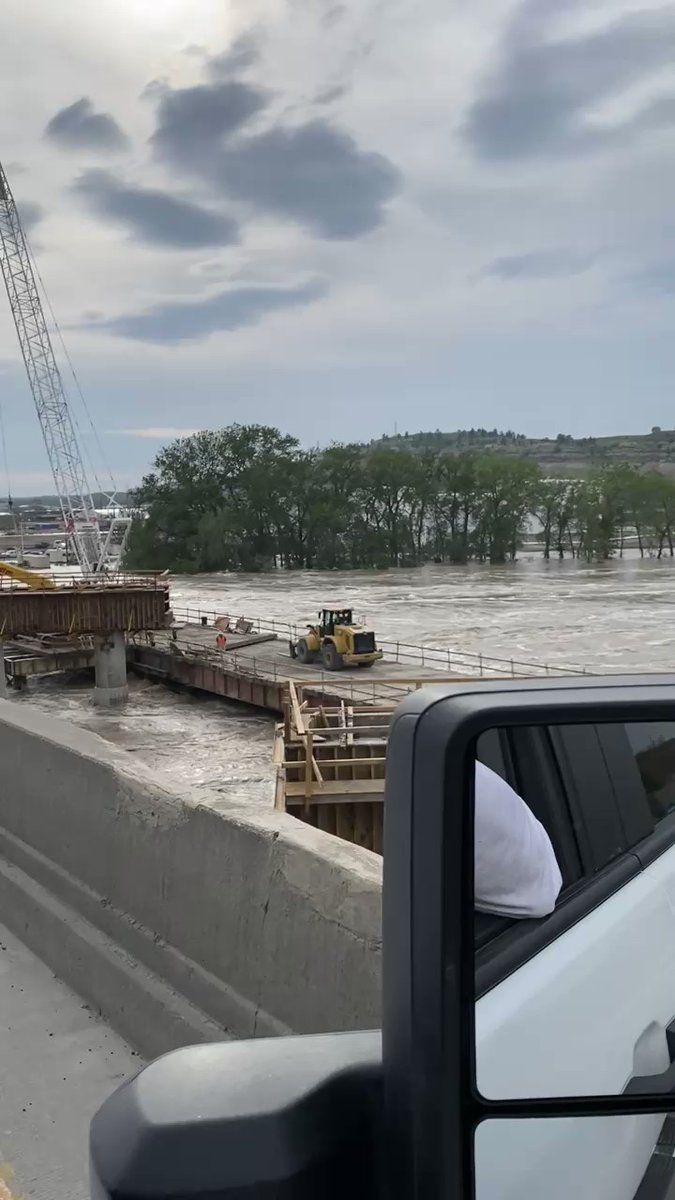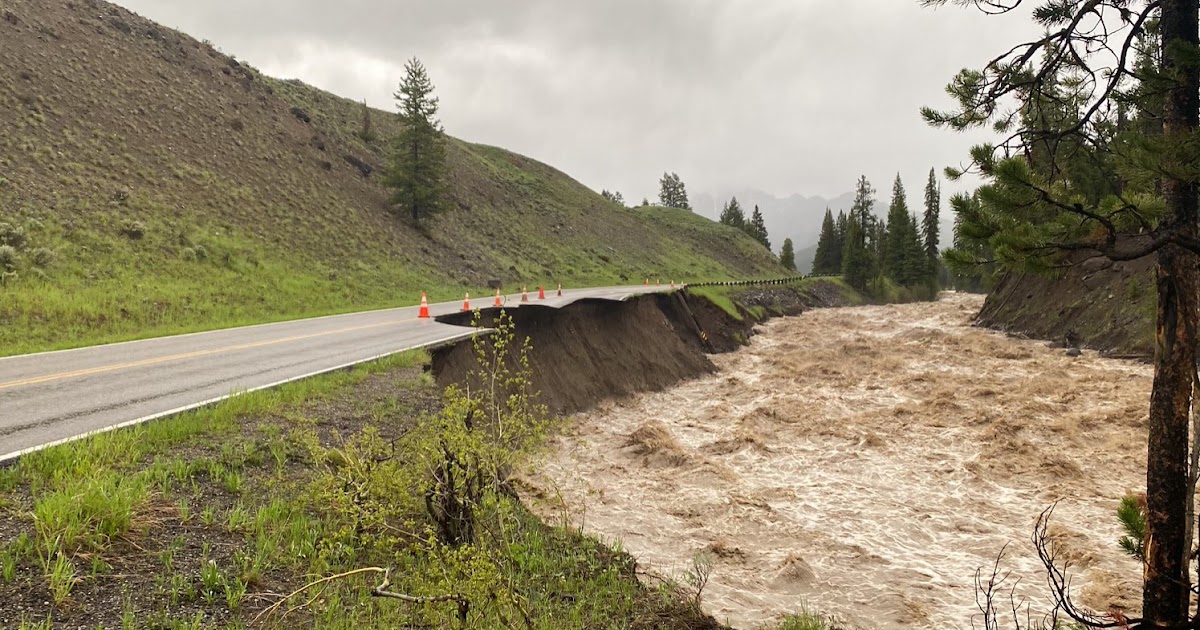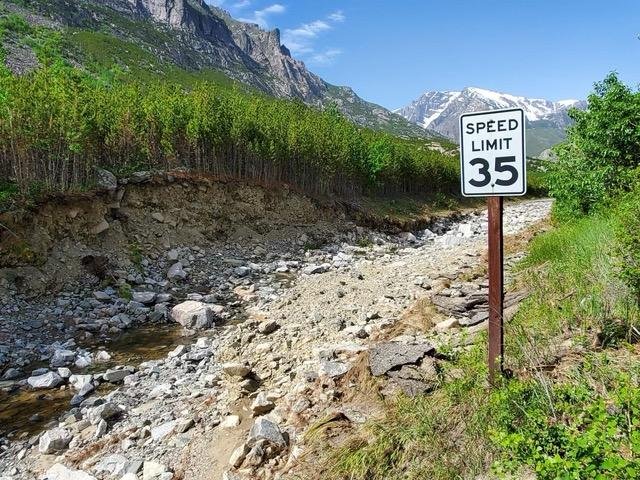Navigation
Install the app
How to install the app on iOS
Follow along with the video below to see how to install our site as a web app on your home screen.
Note: This feature may not be available in some browsers.
More options
You are using an out of date browser. It may not display this or other websites correctly.
You should upgrade or use an alternative browser.
You should upgrade or use an alternative browser.
North Yellowstone Flooding
- Thread starter rmyoung1
- Start date
Professionally, I have to deal with both. And in many instances I get to tell the engineers to “tell me to build it the way I am telling you, to tell me, how to build it.” And with the surveyors I get to deal with “well XXX at your company likes 5’ OS, so we always just do 5’ for any of your companies projects…”
High level of disdain for both. I need them, but wish I didn’t.
We can do a contractor story… I said a couple posts ago that I don’t do construction work, and generally I don’t.
Two weeks ago, big client who I did a boundary and an ALTA, and a drone topo for, just needed a retaining wall laid out. Since I was already in the area, I said I would do it for them. No more than 15 stakes. Couple hundred foot tangent run, 90° corner, hundred foot tangent run, the end. Requested 5 foot offsets, grade to the top of footing. No problem.
I got a call the other day from their contractor, “the engineer shifted the wall a foot and a half into the propert, can you come re-stake it?“ I ask if the vertical changed. Nope. did the length of the wall change? No. Is it only a horizontal shift? Yep. OK… So can’t you make those 5 foot offsets, 6 1/2 foot offsets and build a damn wall? Oh of course not, because to do that, a contractor would have to have two brain cells to rub together, to generate some friction. And as we know, contractors only have one brain cell, and it’s usually half dead from the cocaine and monster energy drinks.
Anyway, the Yellowstone in Billings is receding quickly.
Gulf of America
Well-known member
Just got off a meeting with a consultant who's been out collecting data; based on water stages they collected on the Clark's Fork (of the Yellowstone) after the gage washed out, the river experienced approximately the 1000-yr flood. The Yellowstone at Corwin was about the same, and I believe the Stillwater was too. Definitely doesn't mean it's the first time in 1000 years that those flood levels have been reached, but it's still pretty amazing.
Steiny
Well-known member
I don't live in the west but hear about all the drought problems year after year. Will this flooding and excess water replenish some of the reservoirs where water was badly needed and be beneficial later this summer?
Irrelevant
Well-known member
IMO this was an event that redefines our definition of 100-yr events. I've always thought it odd that we report, map, model 100-yr events on 100 years or less data. That's just not going to give you a reliable gauge.
MTLabrador
Well-known member
The Yellowstone over this last few days was something you almost had to see in person. Just incredible. And even in a normal year runoff is not a joke on that river.
Things are going to look very different when the water drops.
Things are going to look very different when the water drops.
rmyoung1
Well-known member
- Joined
- Jul 12, 2010
- Messages
- 2,606
No dams on the Yellowstone, thankfully.I don't live in the west but hear about all the drought problems year after year. Will this flooding and excess water replenish some of the reservoirs where water was badly needed and be beneficial later this summer?
bonniecutthroat
Member
- Joined
- Jan 13, 2016
- Messages
- 40
IMO this was an event that redefines our definition of 100-yr events. I've always thought it odd that we report, map, model 100-yr events on 100 years or less data. That's just not going to give you a reliable gauge.
A 100-yr event is more appropriately interpreted as an event that has a 1 in 100 chance of occurring. The 'yr' unit is often included since it helps less-mathy people put recurrence intervals into a more familiar context.
See https://www.usgs.gov/special-topics/water-science-school/science/floods-and-recurrence-intervals
Irrelevant
Well-known member
yes. I know. But you can't accurately model a 1:100 event based on 40 events or even 100 events. There's too much inherent variability. Though more advanced models that can factor in all the potential variables including gw, sw, precip, veg, roughness, and topography, and snowpack (and all it's variations), can potentially get pretty close. But often the events we commonly know at 100-yr flood events are strictly based on observed flows, which is too simplified, though also often all that's available.A 100-yr event is more appropriately interpreted as an event that has a 1 in 100 chance of occurring. The 'yr' unit is often included since it helps less-mathy people put recurrence intervals into a more familiar context.
See https://www.usgs.gov/special-topics/water-science-school/science/floods-and-recurrence-intervals
Also, if you think about flows (in this case) as a bell curve, when you get out near the ends it takes very little flow change to jump from say a 1:1,000 event to a 1:1,500 event. I recently updated the design IDF for two dams on irrigation reservoirs from 1:1,500 to 1:30,000. It wasn't a big jump.
antlerradar
Well-known member
First reservoir most of this water is going to hit is Sacajawea in North Dakota.I don't live in the west but hear about all the drought problems year after year. Will this flooding and excess water replenish some of the reservoirs where water was badly needed and be beneficial later this summer?
Potsie
Well-known member
Anybody know of some good relief organizations working in the area?
PrairieHunter
Well-known member
Probably be on fire in a few weeks with the way things go these days.I don't live in the west but hear about all the drought problems year after year. Will this flooding and excess water replenish some of the reservoirs where water was badly needed and be beneficial later this summer?
...as the statisticians start to twitch and mumble about ANOVA, chi squared, and which p-values to use...But you can't accurately model a 1:100 event based on 40 events or even 100 events. There's too much inherent variability.
MTLabrador
Well-known member
Does anyone know if the Church Universal and Triumphant washed away? It would be an interesting end to an interesting little cult.
EastTNHunter
Well-known member
- Joined
- Jun 13, 2018
- Messages
- 2,124
Yeah, no thanks. I don’t think that you’d be able to coax me out thereI wouldn't want to be the dude by the loader and crane in this video..

Yellowstone River Reaches Highest Recorded Level in Billings, Montana
The Yellowstone River reached its highest recorded level at Billings, Montana, on June 14, causing flooding in the city, according to the National Weather Service (NWS).Twitter user @jamesreclaims recorded footage of the floodwaters as he drove on Interstate 90 over the Yellowstone River. The...www.yahoo.com
marshman
Well-known member
The Chehalis Valley in Washington state (my area) has seen two 100 year and one 500 year flood in the last 30 years.Livingston has experienced 3 of what "they" consider 100 year floods in the last 25 ish years...
Things are not the same as they used to be weather wise.
Little Big Man MT Chris
Well-known member
Does anyone know if the Church Universal and Triumphant washed away? It would be an interesting end to an interesting little cult.
I had to google that after your post, I coulda swore I herd the X Files theme song playing while I read about them or it ! And I’ll just leave it at that.
Nameless Range
Well-known member
Still there.Does anyone know if the Church Universal and Triumphant washed away? It would be an interesting end to an interesting little cult.
I was up the Stillwater today. Kind of crazy up there too.
Irrelevant
Well-known member

The Origins of the Yellowstone Flooding and a June Gloom Forecast: All in My New Podcast
This blog provides updated forecasts and comments on current weather or other topics
520 Road Sow
Well-known member
- Joined
- Mar 17, 2017
- Messages
- 6,818
Similar threads
- Replies
- 10
- Views
- 803
- Replies
- 60
- Views
- 3K





